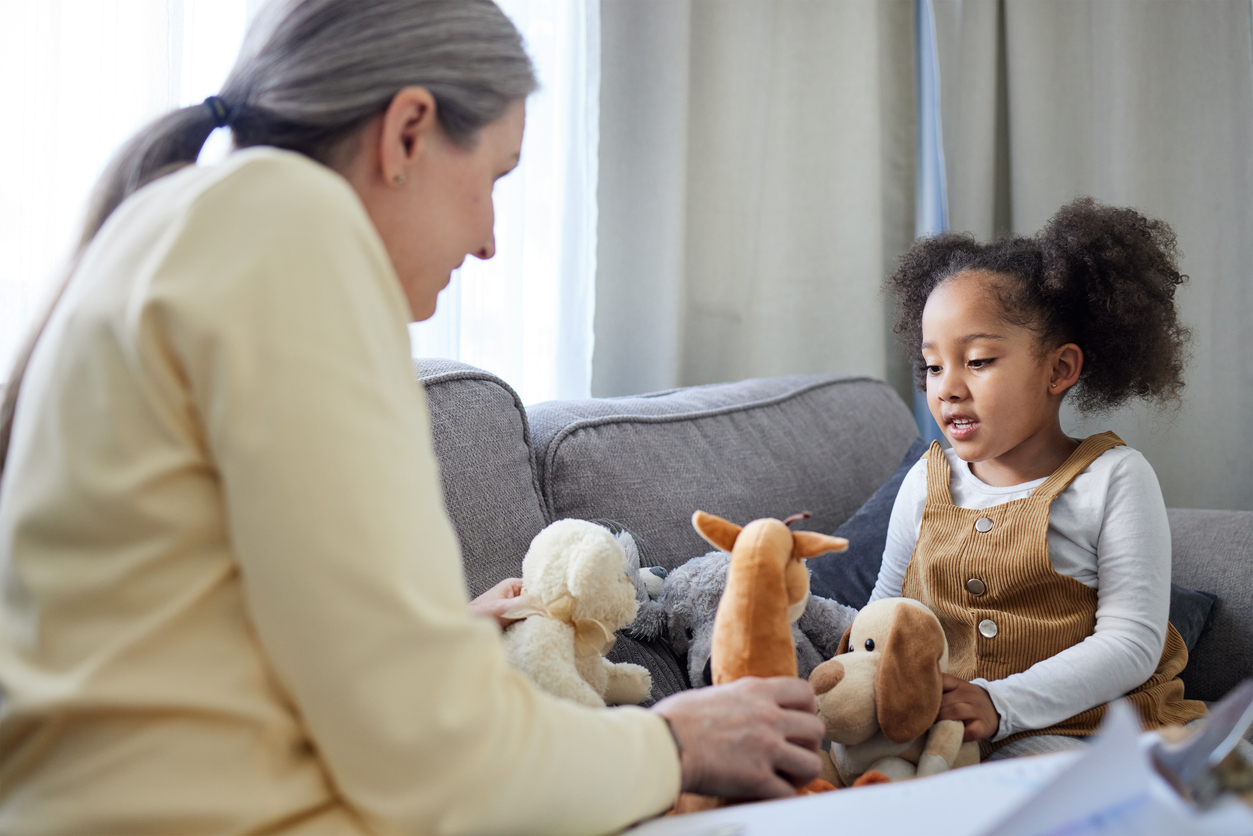
Three tips to help children express emotions
Adi Steiner shares guidance on how to facilitate conversions about difficult things with children and young people
Children’s mental health week is celebrated each year in February and this year’s theme, set by the children’s mental health charity Place2Be, is ‘know yourself, grow yourself’. Through discussion and activities, the aim is to help children and young people realise the importance of self-awareness and expressing emotions, ultimately supporting them to understand themselves and develop their talents. To mark the week, Adi Steiner, course lead for our newly revised course Talking to children about difficult things: an introduction has produced three helpful tips on how professionals working with children and young people can facilitate these important conversations.
For Children’s mental health week, I wanted to take a moment to discuss the importance of talking about difficult things. The work of Shirk and Karver (2003), shows us that no matter what therapeutic approach you take, the relationship alliance is key to open, honest and helpful engagement. It goes without saying that we all need healthy and continuous connections in order to grow and thrive, and for children and young people, who have had adverse childhood experiences, this is particularly crucial. In their 2015 research, Domhardt and others demonstrate how central meaningful connections are by showing that the single most powerful protective factor in the lives of survivors of childhood sexual abuse, is the support they had from their environment. That is, meaningful, positive connections.
Talking about your worries as a child has long been shown to increase resilience, normalise experiences and strengthen the feeling of belonging by decreasing the sense of isolation and loneliness one can feel during challenging times. In a world influenced by social media, children are often exposed to intense glorification of immediate gratification and unrealistic expectations and standards. Hard work, long processes, patience and the mess that comes with life get forgotten. This is why now, more than ever, we need to continue offering the crucial basic needs, that are by no means simple – of safe and inviting presence.
A few tips to get us all started:
- Reflect: Before any professional engagement with a child or young person, ask yourself this – how do I feel about them? How do I feel about this meeting? Don’t be alarmed if the answer is a negative one (I don’t like them/I can’t be bothered with this visit). All answers provide important information. Such small exercises can gradually increase your ability for self-reflection and reflective practice – an incredibly powerful tool.
- Observe: Play around with your ability to observe and notice. Social media and advanced technology are gradually impacting social skills as we know them to be, including attention given to non-verbal communication and body language- facial expression, posture, use of personal space and more. These can all be missed through online communication and so observing how the young person interacts, how they carry themselves or even the way they sit in the room with you can tell you a lot about how they feel. Gently noticing these subtle communications can be magical when used appropriately. Try and remember how you felt the last time someone noted you didn’t feel well and asked “Are you ok?.”
- Be present: This next tip, I call the ‘car journey chat’. All outreach and community-based workers know that children and young people often open up more when they feel less enclosed and expected to talk. Remember to use various spaces and opportunities, just like during a car journey, to show the young person your presence and availability. With a little patience you never know when they might feel ready to share some of their most painful and burdensome experiences.
In our newly revised CPD course, Talking to children about difficult things: an introduction, we take our time to engage in a messy, challenging journey to understanding the underlining reasons why children and young people don’t speak up and discover some of the barriers that we ourselves have to struggle through. We use various theories and approaches to understand the richness of a child and young person’s inner world as well as a little bit of ourselves. And equally importantly, we consider ways to improve communication and create meaningful engagements through practical, easy to apply tools – with the hope of building healthy relationships, fostering a sense of acceptance and love, and encouraging continuous growth.
In good health, have a gentle week everyone.
References
Cicchetti, D., & Toth, S. L. (2009). The development of mental health and psychopathology in children and adolescents: A developmental psychopathology perspective. In Handbook of Developmental Psychopathology (pp. 1-15). Springer.
Domhardt, M., Münzer, A., Fegert, J. M., & Goldbeck, L. (2015). Resilience in Survivors of Child Sexual Abuse: A Systematic Review of the Literature. Trauma, Violence, & Abuse, 16(4), 476-493. https://doi.org/10.1177/1524838014557288
Foster, L., & Sherry, S. B. (2017). Social support and mental health outcomes in children and adolescents: A meta-analysis. Journal of Youth and Adolescence, 46(8), 1471-1485
Rutter, M. (2013). Annual research review: Resilience—clinical implications. Journal of Child Psychology and Psychiatry, 54(4), 474-487
Shirk, S. R., & Karver, M. (2003). Predictors of treatment outcome in youth psychotherapy: A meta-analytic review. Journal of Clinical Child and Adolescent Psychology, 32(3), 443-456.
Intrigued? Learn more about this topic.
You can now register your interest for Talking to children about difficult things: an introduction, a self-study course, which will be opening for bookings later this year and explore our wide range of training for professionals working with children, young people and families.